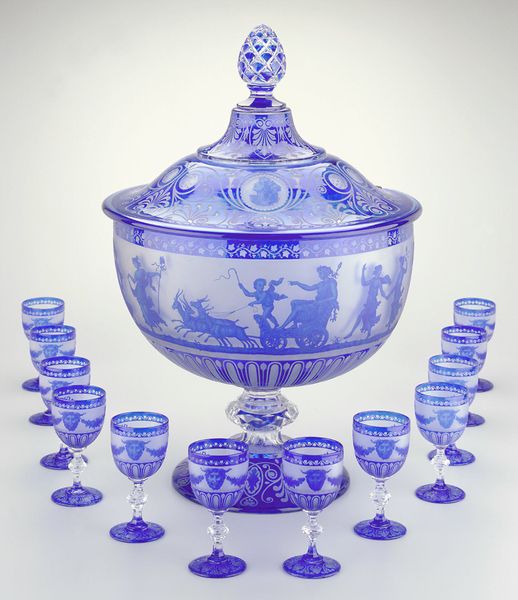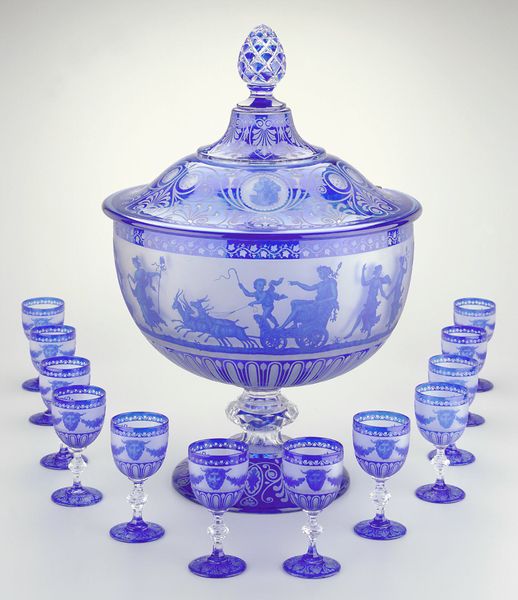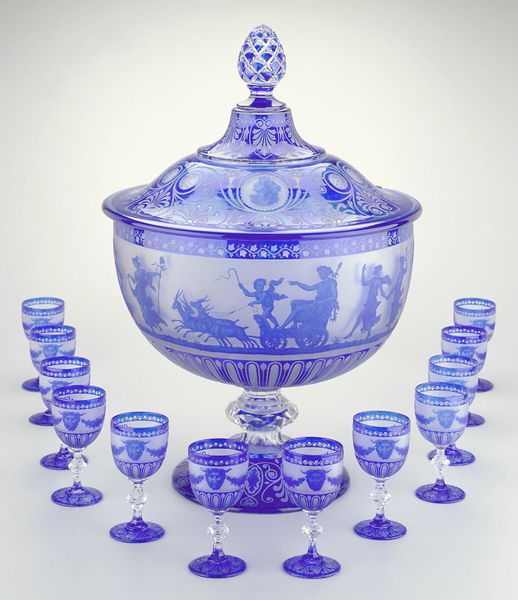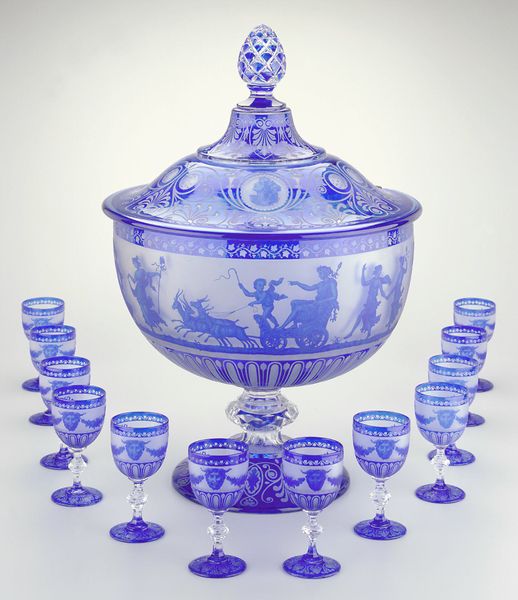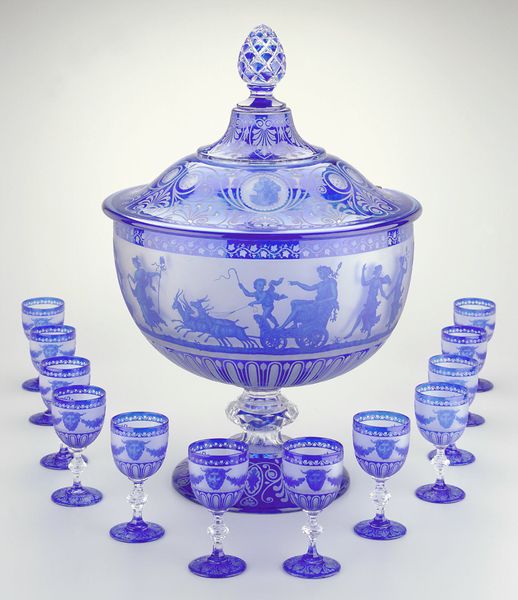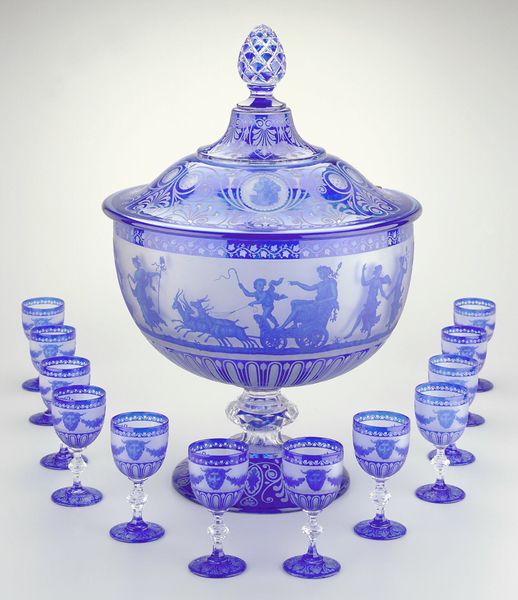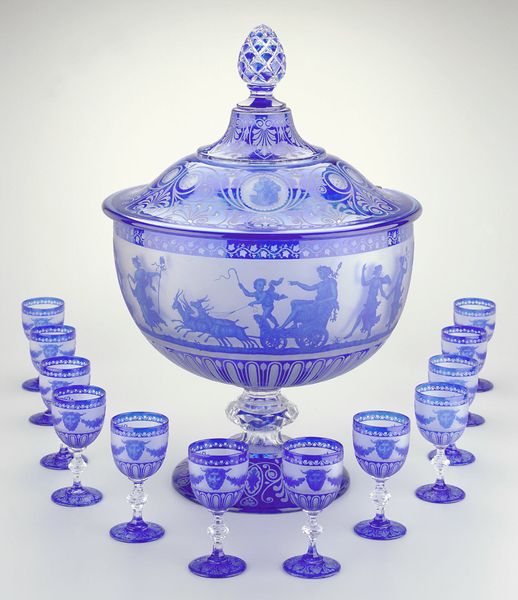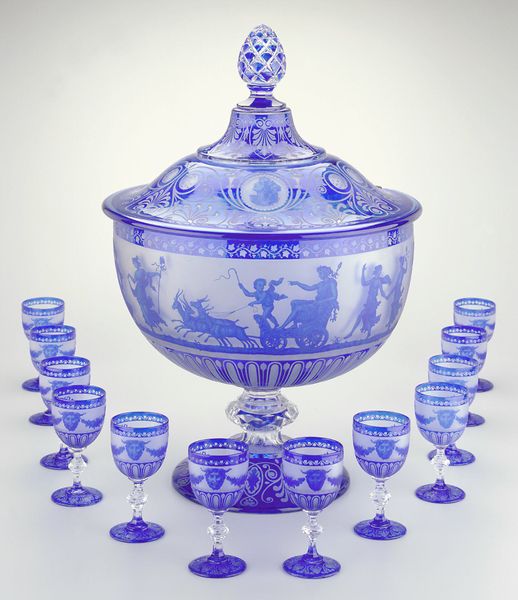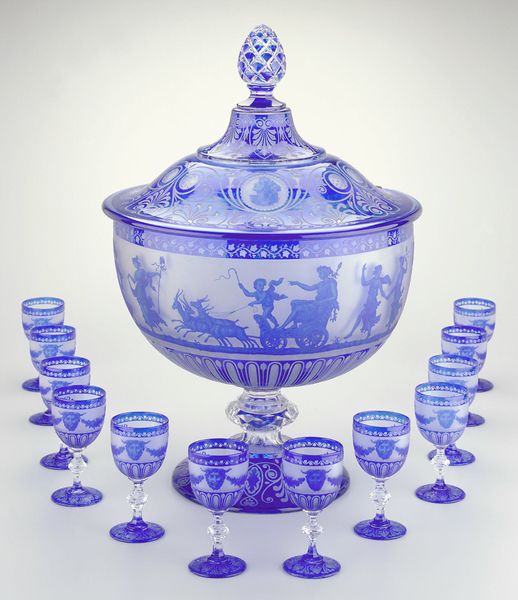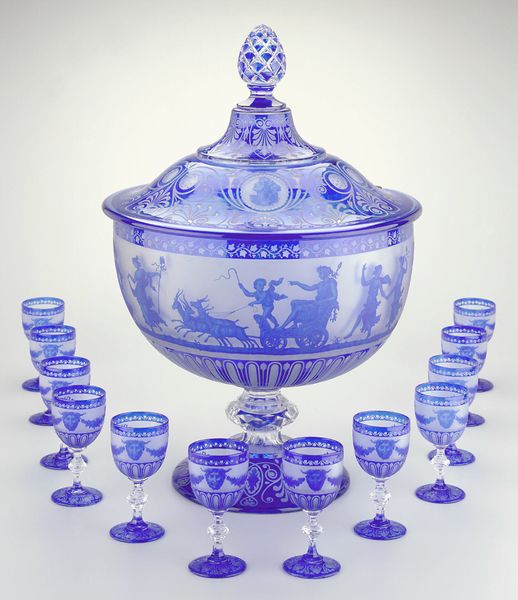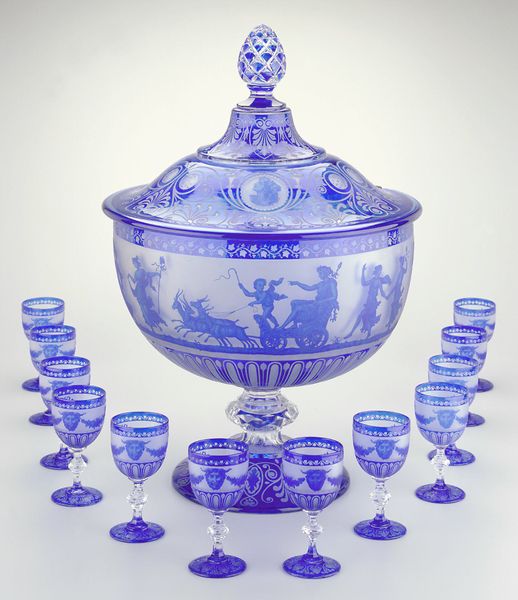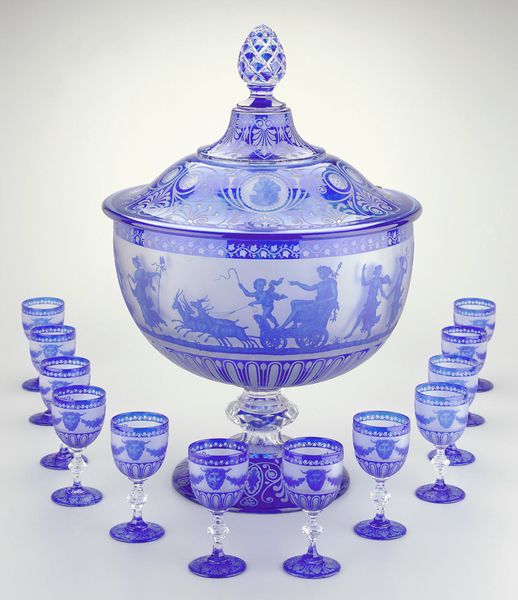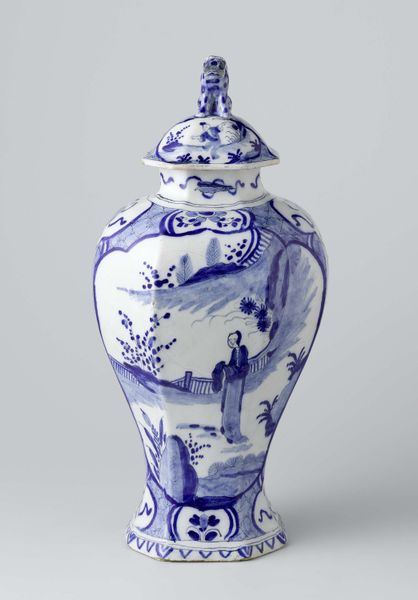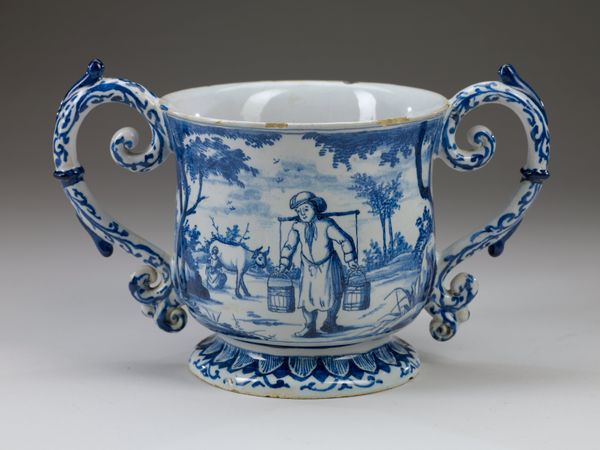
glass
#
glass
#
ancient-mediterranean
#
decorative-art
Dimensions: 23 x 13 15/16 in. (58.42 x 35.4 cm)
Copyright: Public Domain
Editor: This stunning object is a lidded punch bowl with accompanying glasses, made of glass by Cristalleries de Baccarat around 1867. It's truly striking. The translucent blue color and the neoclassical scenes give it an air of elegance. What symbolic meaning do you think these kinds of classical allusions might have had to its original owners? Curator: The appeal of ancient motifs, particularly in decorative arts, speaks volumes about cultural aspiration. This punch bowl doesn’t merely serve a drink; it serves up a vision of an ideal past, linking its owners to the grandeur of classical civilizations. Notice how the procession encircles the bowl? What does it evoke for you? Editor: I see triumph, a kind of celebratory parade almost, something theatrical. Curator: Precisely! Consider the rising merchant class of the 19th century. Displaying objects like this signaled not only wealth but also a cultivated appreciation for history, literature, and art, what was regarded as "good taste" at that time. They are, in a sense, staging their own miniature version of aristocratic rituals. The imagery serves to ennoble their present with borrowed glory. The act of sharing a punch from such a vessel becomes performative, steeped in symbolism of abundance and cultivated taste. What emotions arise for you when considering how symbols of class are coded into objects? Editor: I never thought about glassware as such a rich symbol! The aspiration embedded in the object is more visible to me now. It becomes a silent narrator of social ambitions and the desire for cultural legitimacy. Curator: And that, in turn, makes us question which of our own material belongings will one day tell stories about us! Thank you, these forms carry an incredible weight once we learn to examine the meaning embedded within.
Comments
minneapolisinstituteofart over 1 year ago
⋮
Baccarat punch bowls and goblets with Bacchus-themed decoration made their debut in Paris, at the International Exposition of 1867. To produce these designs featuring the ancient Roman god of wine, the Baccarat firm employed the innovative technique of acid etching, instead of the customary copper-wheel engraving.
Join the conversation
Join millions of artists and users on Artera today and experience the ultimate creative platform.
